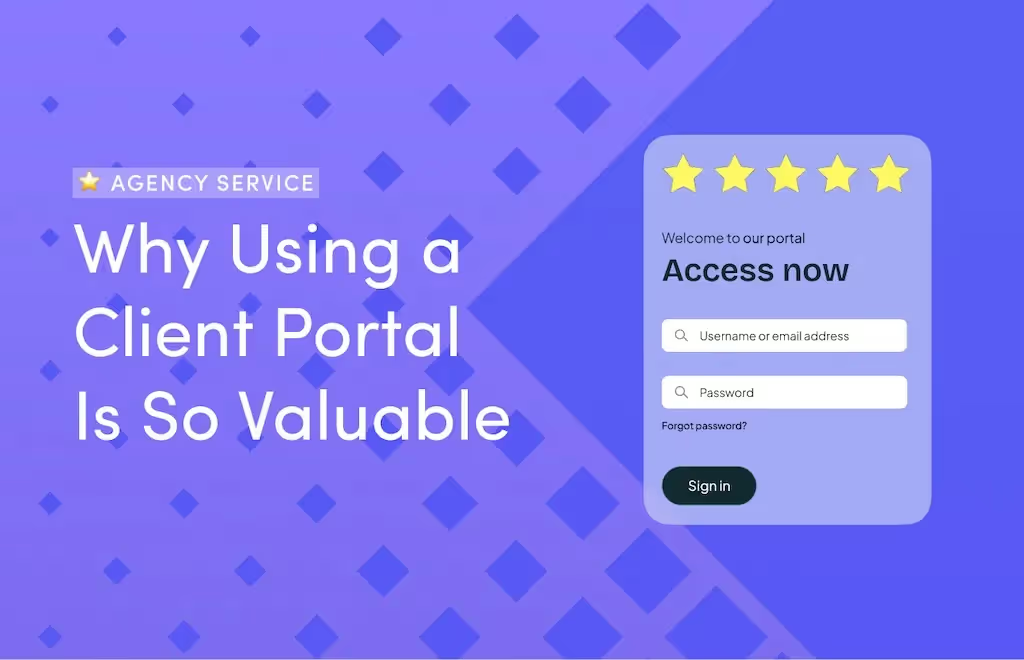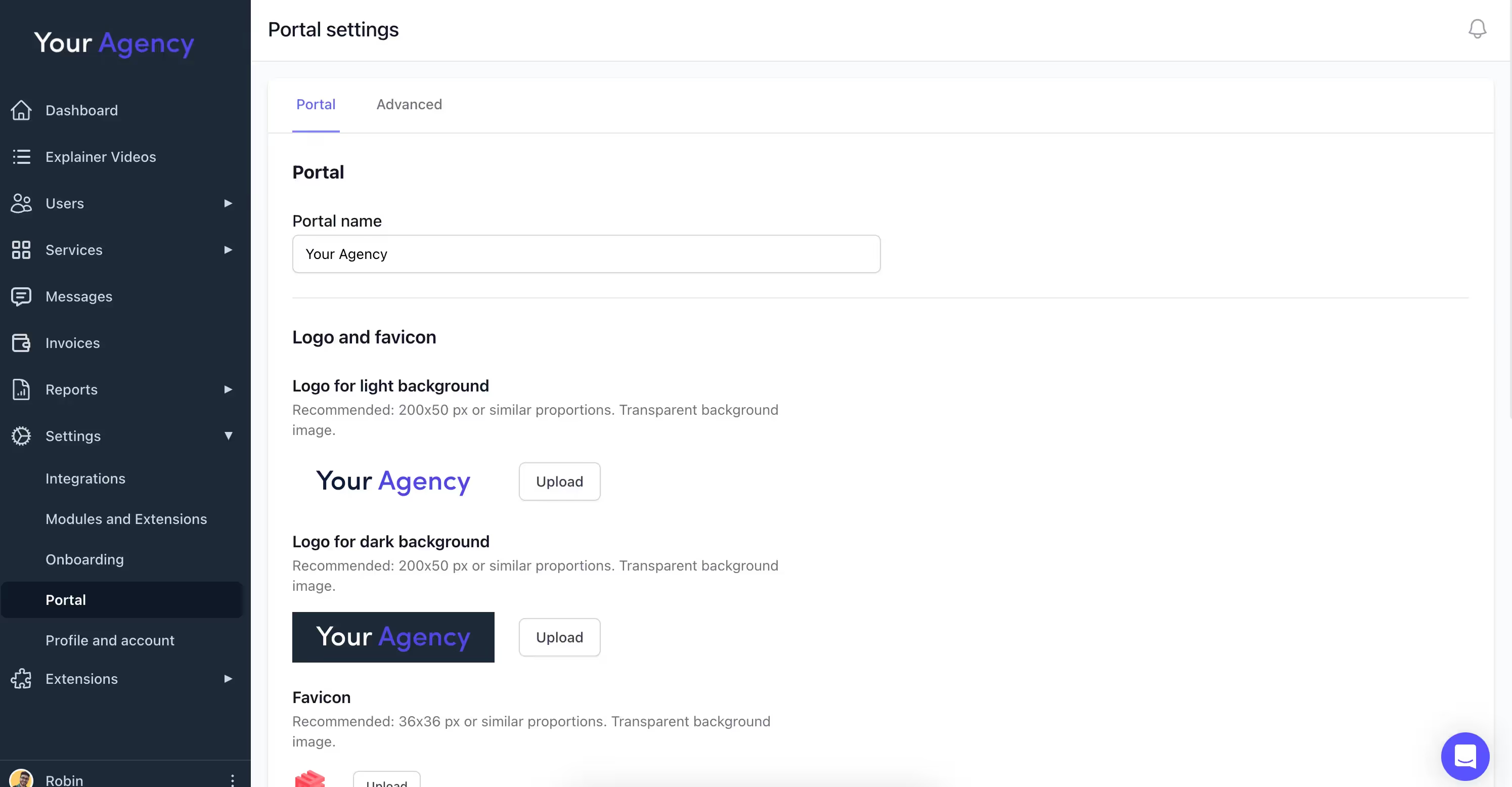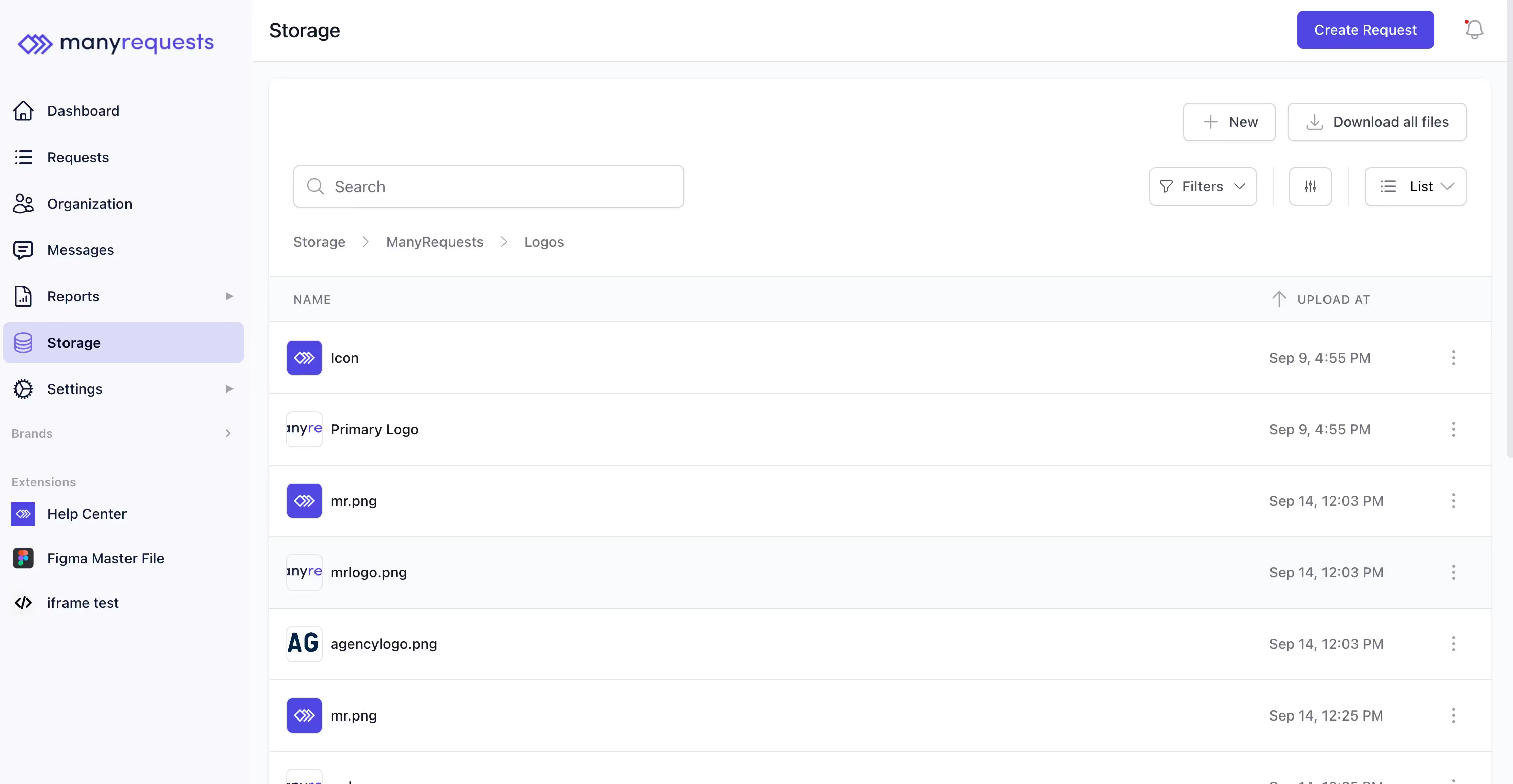Using a Client Portal: What It Is & Why It's So Valuable
Using a client portal is key to enabling a great customer experience while retaining full control of your brand. In this post, we explore why.




A client portal (or area) is a software application linked to your existing website which enables customers to view and sometimes act upon their account information themselves. Using a client portal is key to enabling a great customer experience while retaining full control of your brand.
If you offer online services to customers via email, messaging, or perhaps a freelancing platform, you can think of a client portal as a "replacement" for any of these.
The (big) difference between these options?
With a client portal, you're keeping customers under your brand.
Instead of constantly pushing them onto that new platform or this new email thread, you're keeping them where you can control their experience most—in the client portal.
With so many services claiming to be the next leap ahead in terms of work communication (Fiverr, Slack, etc.), do you really want to trust these with your customers' data?
One of the hardest things to do after acquiring a customer is to keep that customer coming for more. With your own client portal, that process is made a lot easier than working via Gmail.
That's because customers will have access to:
… all in one place where they can interact with your brand and your brand only.
Ultimately, your goal is to retain customers for the long-term, and a better way to do that is to have them consume more of your branded assets while providing an amazing experience.
That's what a client portal is all about.

A client portal is a software application linked directly to your existing website and developed either from scratch or installed easily via a third-party provider like ManyRequests.
Good client portals should tackle 3 main components:
We'll look at each of these more in-depth in a moment, but the key thing for you to remember is that a client portal serves the primary purpose of keeping customers under your brand.
Why?
Because it helps you control their experience.
When you're left piecing things together from one technology provider to another, your customers suffer from a fragmented experience which doesn't keep them engaged.

Since you're constantly sending them out to new tools and, potentially, new providers, they may be wondering whether there are better ways to tackle their problems and needs.
This is including you as a service provider.
To a customer, nothing is set in stone.
If they can find a better way to get the job done at half the price or twice the return, they will jump ship, no matter how much time they've spent with the previous provider.
If customers are able find a better way to get the job done at half the price or twice the return, they will jump ship. Keeping them engaged is a function of customer experience—the key pillar of any client portal.
A customer who's unengaged with your process will either start slowly fading away (less and less communication) or suddenly and unexpectedly "ghost" you without reason.
That's what you want to avoid...
And a client portal is how you can get it done!
You don't really have a say in your customers' experience until you have a unified process that takes them from A to B without them ever losing track of your branding.
That's why branding is customer experience: it's not just your logo, it's not just your colors… It's the combination of what your customers feel like paired with what they actually get.

If you're able to make your customers feel a certain way while delivering amazing results along the way, you're much more likely to retain them for years to come—not months.
A client portal helps with that by:
This will not only keep your customers engaged but it will also cement your brand as the solution to getting things done in your area of expertise.

That's a priceless perk in a competitive environment. The more you keep your customers under your brand, the higher the likelihood you'll still have them around years from now.
If you've had experience working with customers via email in the past, you know what a hot mess it can be to track all of the pieces. This hurts productivity (and your brain!).
A client portal improves productivity by breaking projects down into tasks (we call them requests) that the customer can follow and be notified of as you progress through them.
A client portal improves productivity by breaking projects down into tasks that the customer can follow and be notified of as you progress.
These tasks need to be completed whether you have a client portal or not, but having one will reduce the time you spend on communicating with customers by more than 125%.
How do I know?
I've personally tested this in my own daily work.
I used to write emails every time that something had to be communicated, yet I couldn't help but notice that customers weren't as active as I would have liked them to be that way.

Countless hours spent drafting emails which felt like shouting in the void.
And all of that just to give customers updates...
"Hey X, here's the piece you had requested with a link to an editable Google Doc. You can also find a PDF draft attached for reference. Let me know if you have any feedback and I'll get it up on your website."
All of this was done manually, and for any type of update, whether it be an account-related issue, something that had to do with a project, or a simple follow up.
With a client portal, your customers always have access to the latest updates themselves, and best of all, they are automatically notified once you progress through each stage.
No more tiresome cross-checking against dozens of spreadsheets; you can finally have it all in one front-facing dashboard where customers are always up to speed on the latest.
Email is great. After a whopping 30+ years from its inception, it's still the primary way service providers run their businesses, and that's because it's a very flexible tool.
You can use it as a way to manage tasks, communicate with customers, and work on projects at the same time. All of that without paying a cent, which is what makes it so appealing.

The problem is, email is old.
And so is the experience it provides.
The internet has transformed to become a host of work experiences which are a lot richer than email alone and, as a service provider, it's hard to match that level of engagement.
Every day, you're fighting against the Fiverrs of the world. And every other day you run the risk of a competitor you had never heard of creating the ultimate portal for customers to benefit from.
For communication purposes, a client portal puts control back in your hands; not in Google's nor in Fiverr's. Finally, your customers' information is kept truly private.


Not only that, you get to decide what to do with that data!
Want to branch off into software and use the previously-acquired information to create a Minimum Viable Product? Go ahead, nobody's stopping you because the data is yours.
That can't be said with Facebook, or Gmail, or any of the sort.
You can retrieve all data from within these platforms but they certainly don't make it easy to access, and it's mostly a laborious process of going through things manually.
With your own client portal, all communication data is hosted under your specific guidelines and you can re-use it however you want.
With your own client portal, all communication data is hosted under your specific guidelines (i.e. the rules and processes you set as part of your daily operations).
That means you have total control over them.

If you've run your business over email for years (or perhaps decades), switching to a client portal certainly isn't going to be a walk in the park. There's still tech involved after all.
However, the benefits of using a customer portal over good old email, or even a more modern freelancing platform, are clear—you and no one else get to control the customer experience.
That's something that you can't ignore as a service provider, no matter how much you like Gmail's labeling system. The data and productivity gains are tangible.
To get started with your own client portal today, get a 14-day free trial with ManyRequests by clicking on the image below and deliver an experience your customers won't forget.
Originally published May 3 2021
Customer portal is a term used to describe a software application (primarily web-based but also often available via mobile app) which allows customers of a specific company to access their own accounts and act upon certain information themselves, without contacting support.
A client portal will often be linked to an existing website seamlessly because of the natural progression from marketing to sales to service which is well-served by switching from one environment to the other (from the website for marketing to the portal for sales + service).
You can add a client portal to your website in two ways: 1) create the portal from scratch with custom development, something we don't recommend unless you are 100% confident you can spend 100s of hours developing your own solution, or; 2) open an account with a client portal provider like ManyRequests and get started configuring your own portal in just 5 minutes.
A good customer portal should focus on 3 primary components: 1) branding (or customer experience); 2) productivity, and; 3) communication. Check out the sections in the blog post above to learn more about the three components in detail.